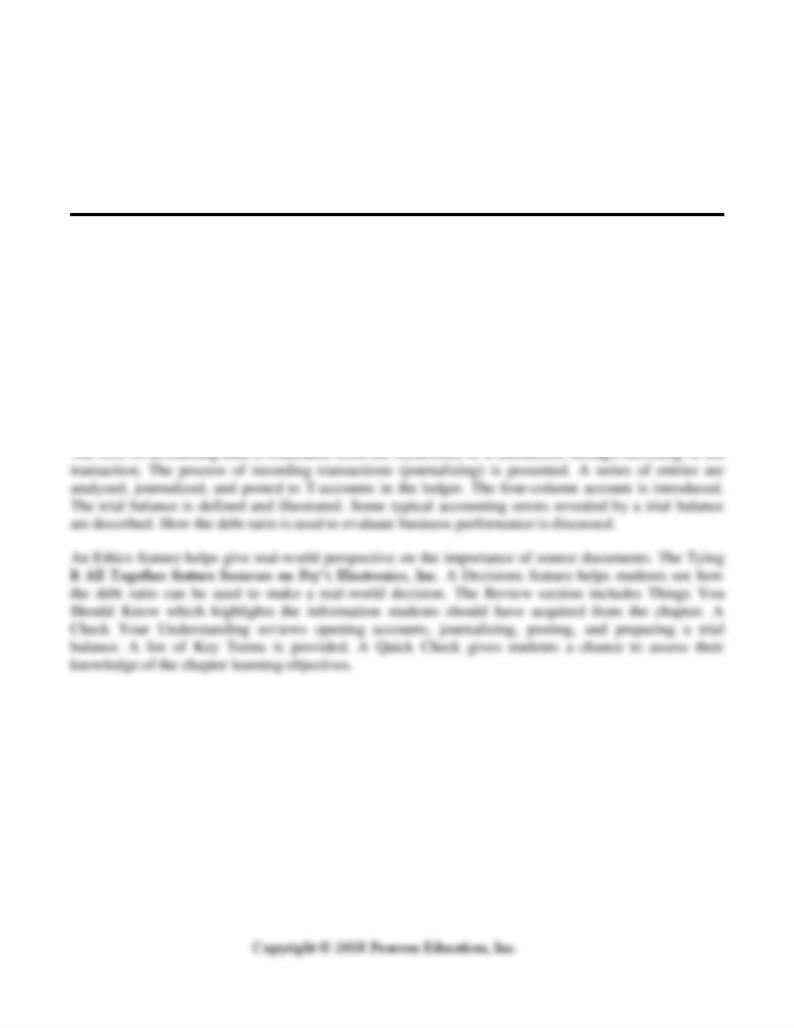
Chapter 2
Recording Business Transactions
Chapter 2: Overview
The chapter introduces the account and then briefly describes specific asset, liability, and stockholders’
equity accounts. The chart of accounts is presented as a way to organize accounts, and the ledger is
introduced as a tool for maintaining the accounts. The concept of double-entry accounting and the rules
of debit and credit for increasing or decreasing assets, liabilities, and equity are described. The rules of
debit and credit are then expanded to include specific types of equity accounts. The normal balances of
accounts are explained. The T-account is illustrated. The accounting equation is tied to the rules of debit
and credit.
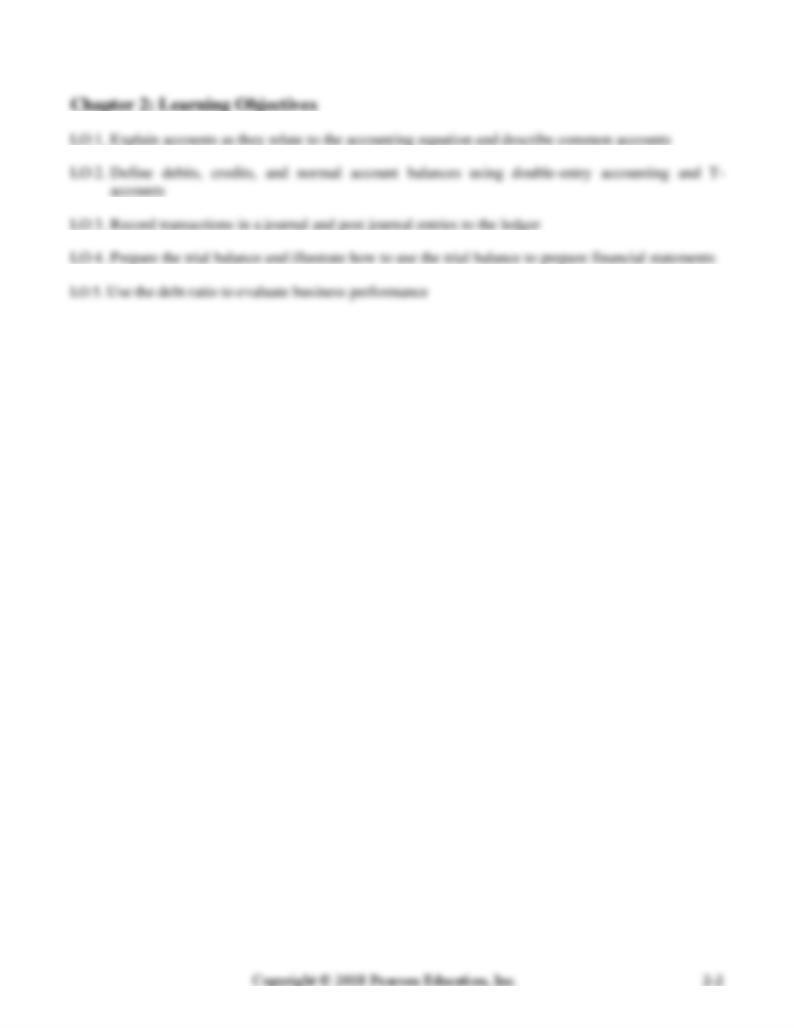
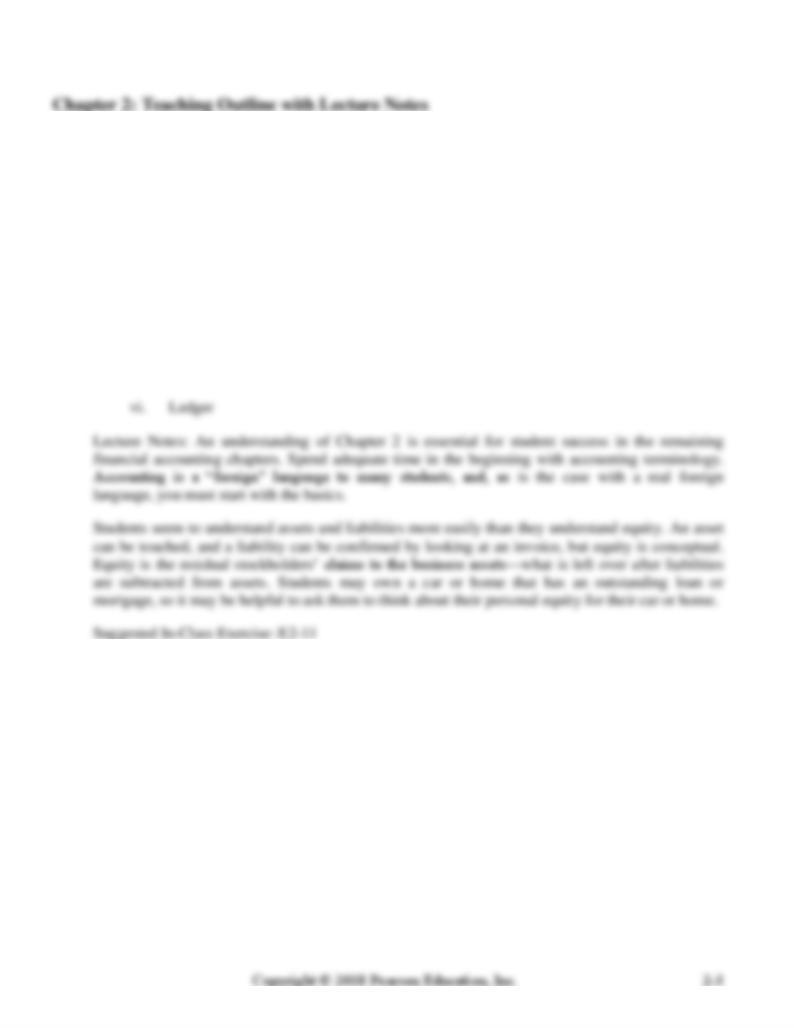
LO 1. Explain accounts as they relate to the accounting equation and describe common accounts
a) Review the accounting equation
b) Review the following terms and give examples of common accounts:
i. Account
ii. Assets (Exhibit 2-1: Asset Accounts)
iii. Liabilities (Exhibit 2-2: Liability Accounts)
iv. Equity (Exhibit 2-3: Equity Accounts)
v. Chart of accounts (Exhibit 2-4: Chart of Accounts—Smart Touch Learning)
LO 2. Define debits, credits, and normal account balances using double-entry accounting and T-accounts
a) Double-entry system
b) The T-account
c) The accounting equation and the rules of debit and credit
d) Increases and decreases in the accounts
e) Expanding the rules of debit and credit
f) The normal balance of an account
g) Exhibit 2-5: Rules of Debit and Credit and Normal Balances for Each Account Type
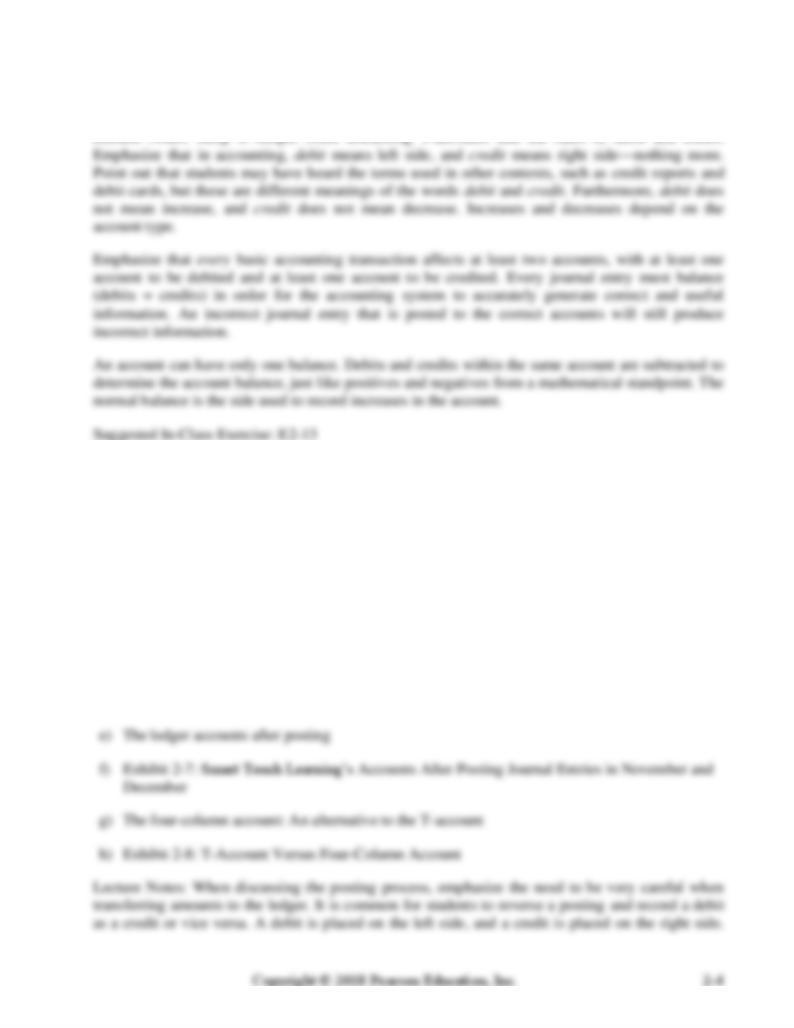
h) Determining the balance of a T-account
LO 3. Record transactions in a journal and post journal entries to the ledger
a) Define the following terms:
i. Source documents
ii. Journal
iii. Posting
b) Exhibit 2-6: Flow of Accounting Data
c) Introduce the five steps of journalizing and posting
d) Journalize and post with 17 specific Smart Touch Learning examples
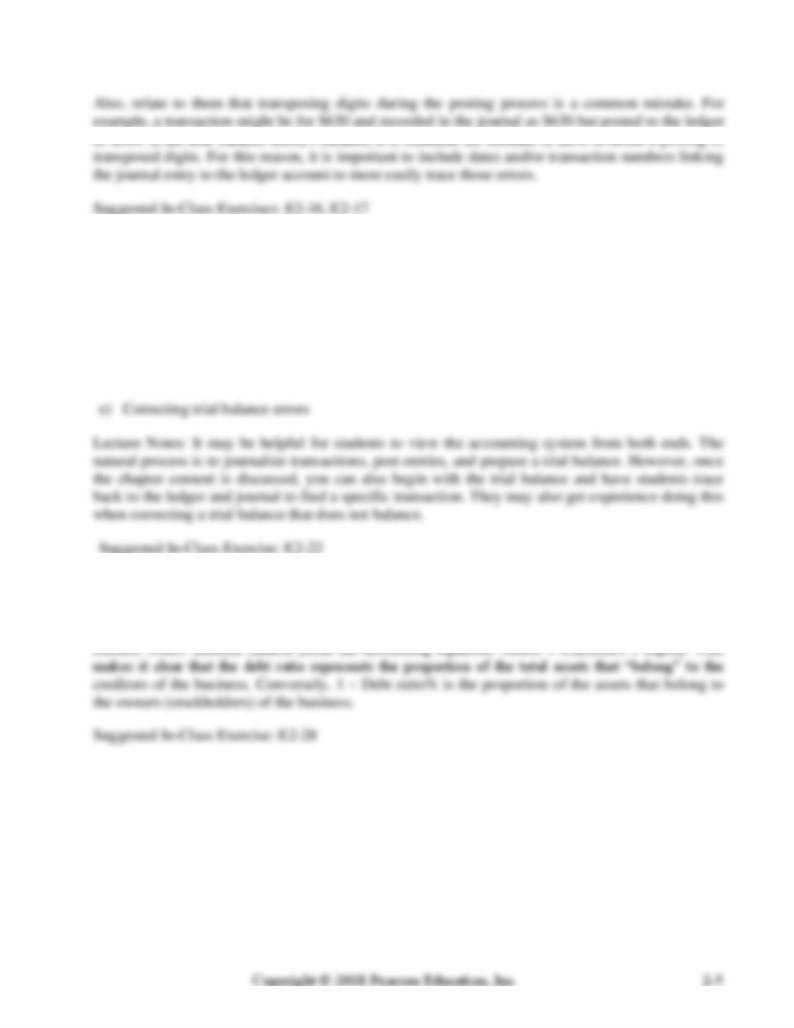
LO 4. Prepare the trial balance and illustrate how to use the trial balance to prepare financial statements
a) Define a trial balance
b) Exhibit 2-10: Trial Balance
c) Preparing financial statements from the trial balance
d) Exhibit 2-11: Smart Touch Learning’s Financial Statements
LO 5. Use the debt ratio to evaluate business performance
a) Define the debt ratio and explain how it is calculated
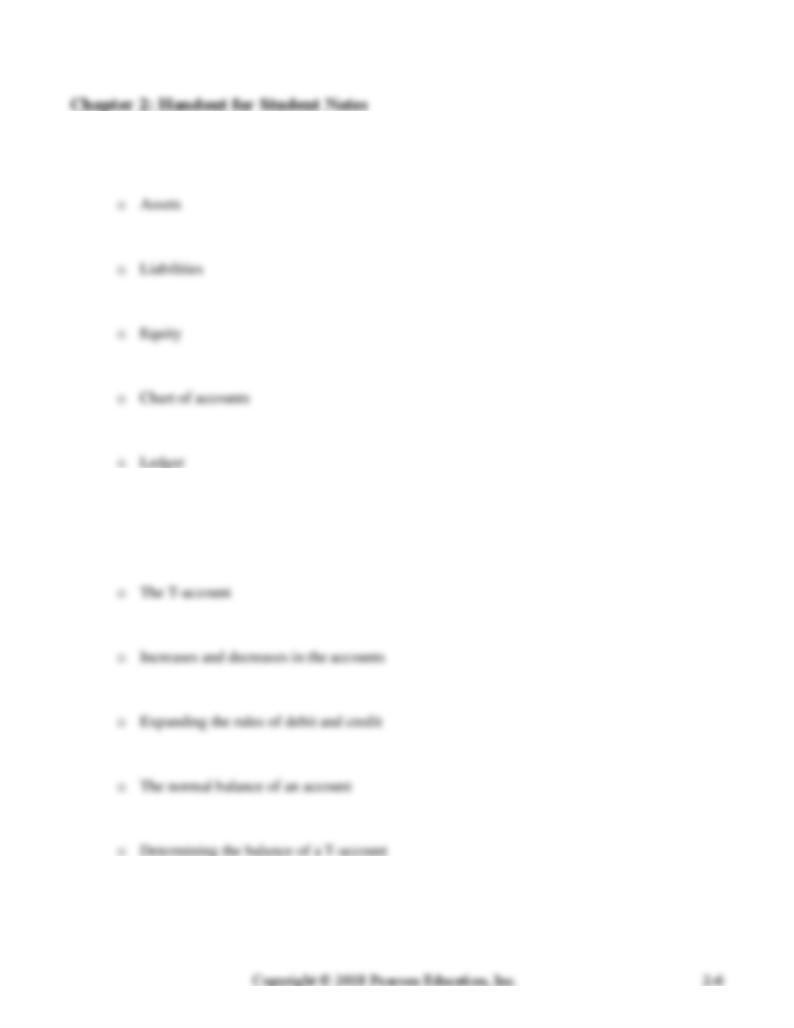
LO 1. What is an account?
LO 2. What is double-entry accounting?
LO 3. How do you record transactions?

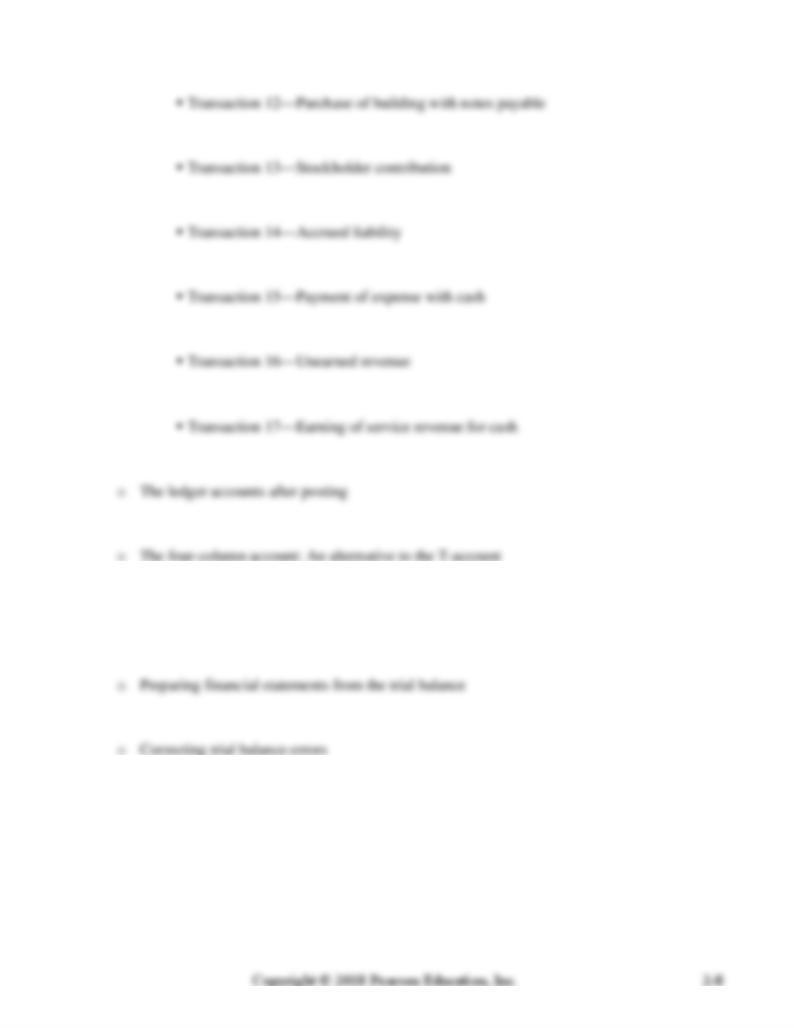
LO 4. What is the trial balance?
LO 5. How do you use the debt ratio to evaluate business performance?
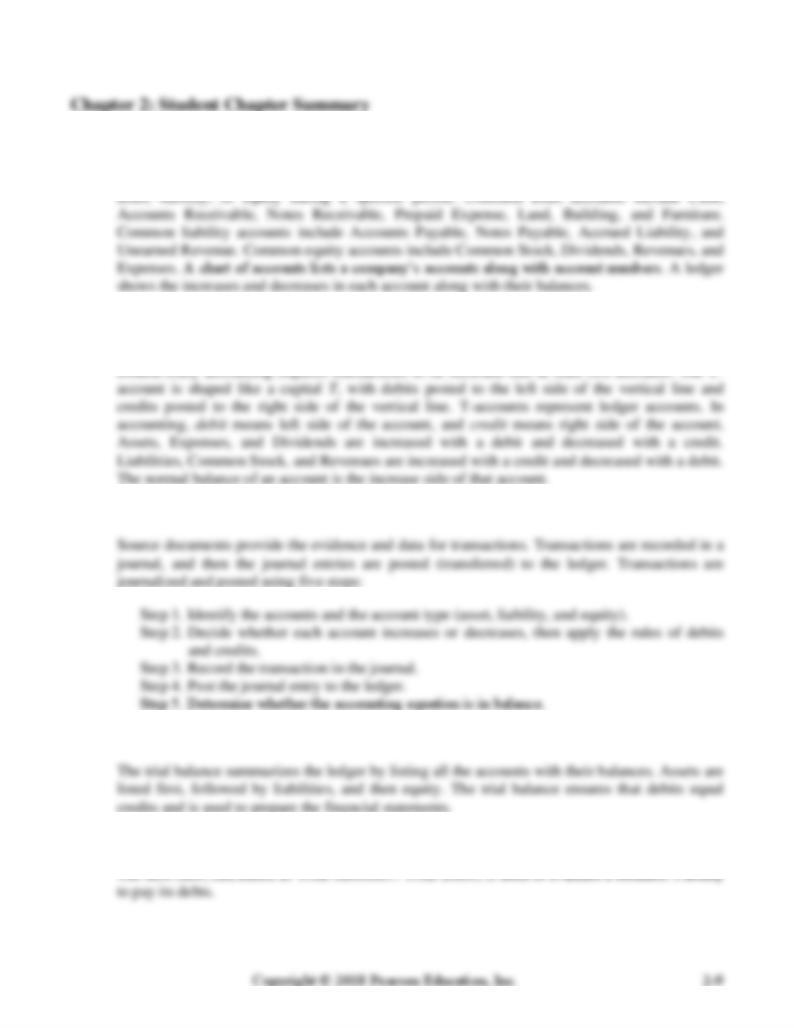
LO 1. Explain accounts as they relate to the accounting equation and describe common accounts
An account is a detailed record of all increases and decreases that have occurred in an individual
LO 2. Define debits, credits, and normal account balances using double-entry accounting and T-
accounts
LO 3. Record transactions in a journal and post journal entries to the ledger
LO 4. Prepare the trial balance and use the trial balance to prepare financial statements
LO 5. Use the debt ratio to evaluate business performance

P2-34A, P2-40B
X
X
S – Short Exercises (Easy)
E – Exercises (Moderate)
P – Problems (Difficult)
Other End-of-Chapter Materials:
Using Excel P2-41
Continuing Problem P2-42
Practice Set P2-43

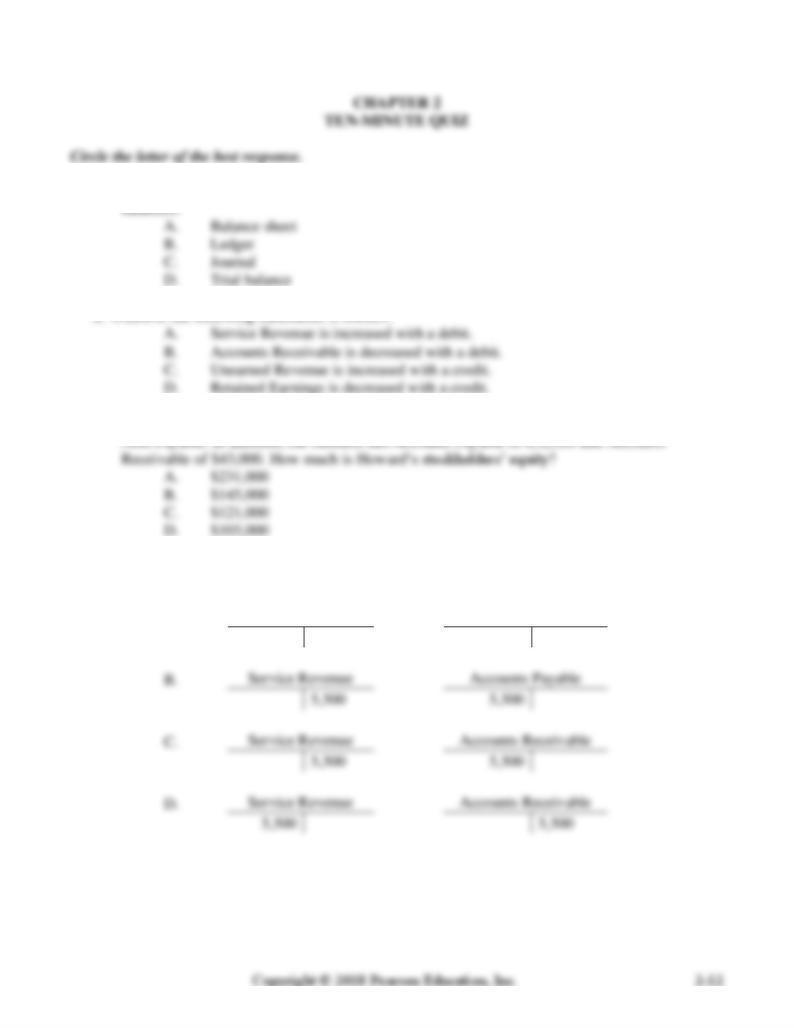
1. Which of the following is a collection of all the accounts, the changes in those accounts, and their
2. Which of the following statements is correct?
3. Suppose Howard Corporation has Furniture totaling $158,000, Cash of $18,000, and a $64,000
4. Amada Company billed a customer for $5,500 of services provided on account. This transaction
appears in T-accounts as follows:
A.
Service Revenue
Accounts Payable
5,500
5,500

5. Barstock, Inc., began the year with total assets of $177,000 and liabilities of $112,000. During the
year, the business earned revenue of $103,000 and incurred expenses of $48,000. The
6. Hughes Copies, Inc., erroneously recorded a purchase of equipment on account by debiting
7. Terry Baxter is a stockholder of Alpha Corp. In exchange for additional shares of common stock,
Baxter provided Alpha Corp with $75,000 of computer equipment. The journal entry to record
this transaction is as follows:
Date
Accounts and Explanations
Debit
Credit
A.
Common Stock
75,000
8. Which journal entry records a $5,500 payment for office supplies that were previously purchased
on account?
Date
Accounts and Explanations
Debit
Credit
A.
Cash
5,500
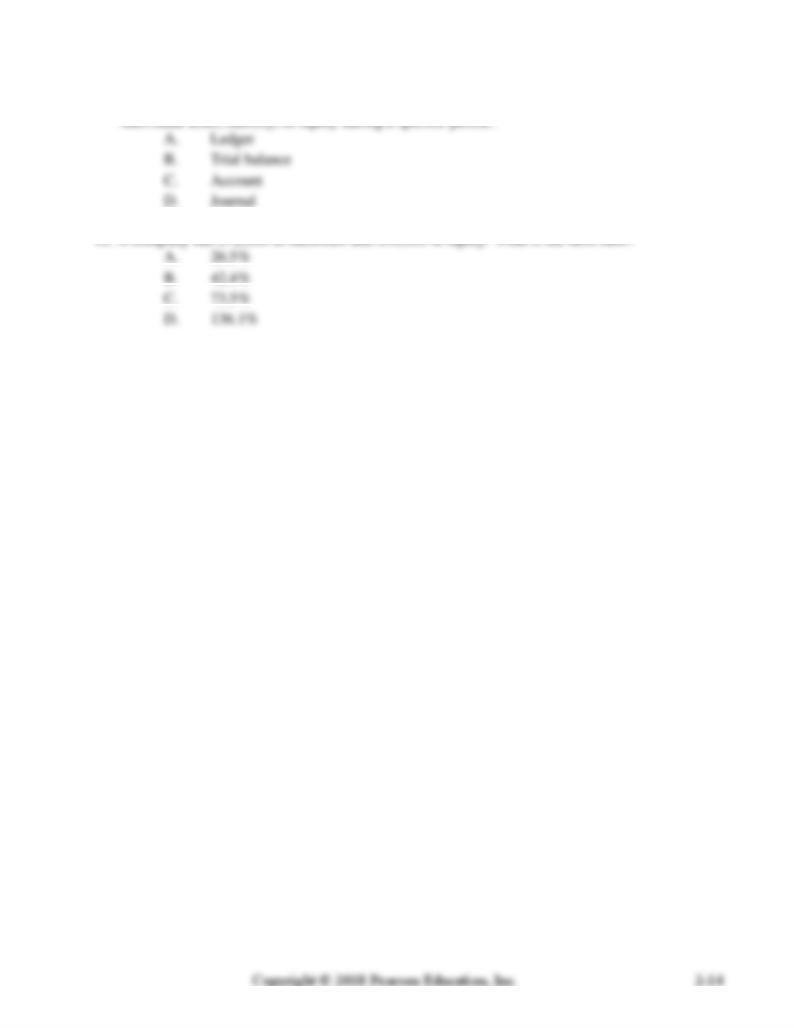
9. What is the detailed record of all increases and decreases that have occurred in a specific
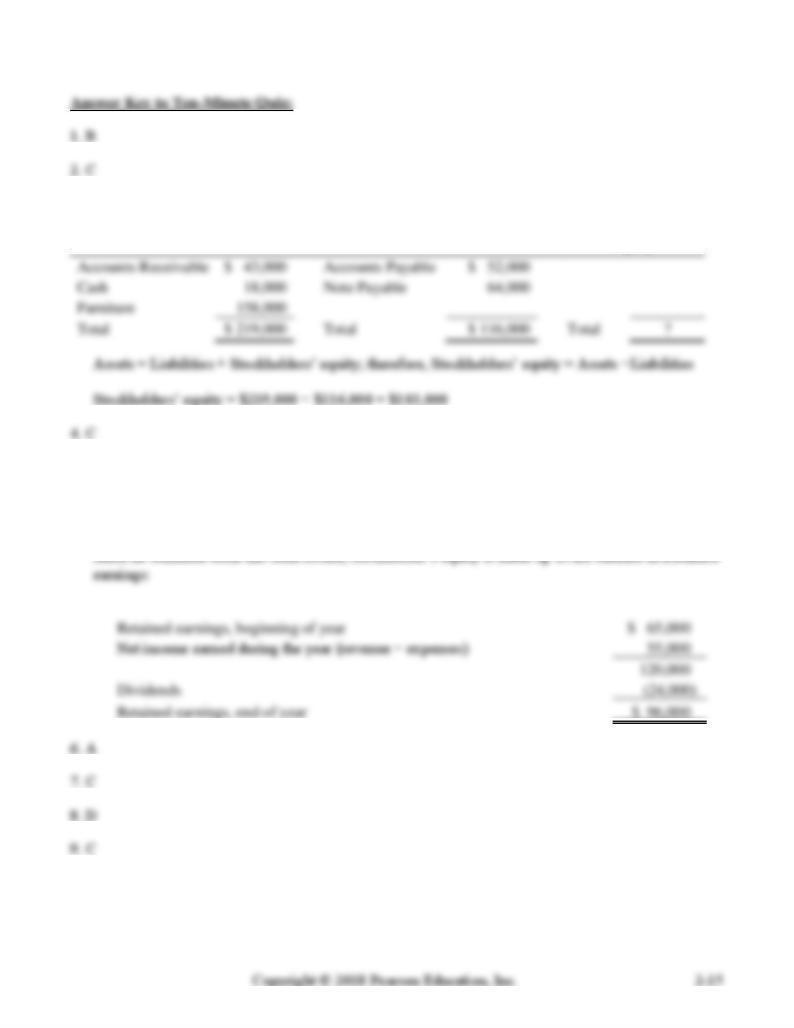
3. D
Assets
=
Liabilities
+
Stockholders’
Equity
5. B
Assets = Liabilities + Stockholders’ equity; therefore, Stockholders’ equity = Assets −Liabilities
Stockholders’ equity at the beginning of the year = $177,000 − $112,000 = $65,000
10. B
Debt ratio = Total liabilities / Total assets* = $72,000 / $170,000 = 42.4%
*Total assets = Liabilities + Equity = $72,000 + 98,000 = $170,000

2. When you deposit money in your bank account, the bank credits your account. Is the bank misusing
the word credit in this context? Why does the bank use the term credit instead of debit to refer to
your deposit?
2. Prepare the company’s financial statements for the most recent month, quarter, or year. (You may
omit the statement of cash flows.) You may use either made-up account balances or balances
supplied by the owner.
If the business has a large number of accounts within a category, combine related accounts and report a
single amount on the financial statements. For example, the company may have several Cash accounts.
Combine all Cash amounts and report a single Cash amount on the balance sheet. You will probably
